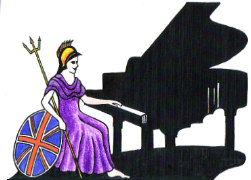Teachers, Accompanists and Piano Entertainers in the UK

UK Piano Page

43 Botley Road
Oxford, Oxfordshire OX2 OBN
England
We are specialists retailer of traditional pianos
87, St. Clements St
Oxford, Oxfordshire OX4 1AR
England
Unit 15 Wroslyn Road Industrial Estate
Wroslyn Road
Freeland, Oxfordshire OX29 8HZ
England
Buying a piano is a big investment – financially
Thatched Cottage
Lew
Witney, Oxfordshire OX182AZ
England
Shackell Pianos have been buying and selling
18-20 Mochdre Industrial Estate
Newtown
Newtown, Powys SY16 4LE
Wales/Cymru
Based in the picturesque Mid-Wales countryside
Music Festival for performers and guests Our 10th
18-06-2022 12:30PM
The Morecambe Bay Piano Group was set up to extend
11-12-2021 01:00PM
The Morecambe Bay Piano Group was set up to extend
08-01-2022 01:00PM
The Morecambe Bay Piano Group was set up to extend
12-02-2022 01:00PM